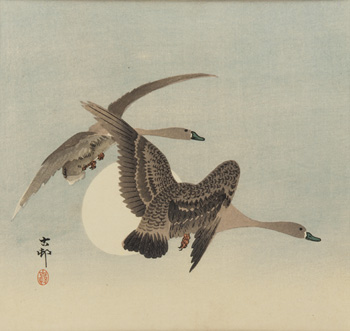The glass by Alphonse-Georges Reyen for Maison de l’Escalier de Cristal Pannier Lahoche & Co., 1889
In the Japanese style, the vase engraved A. Reyen 1889 and Escalier de Cristal Paris, the mount engraved Escalier de Cristal Paris
14 in (35.6 cm) high, 11 ½ in (29.2 cm) wide, including ormolu mount
Exhibited
Salon de la Société Nationale des Beaux-Arts, 1893
cf. Victor Arwas, Glass: Art Nouveau to Art Deco, 1987, pp. 261-262
Reyen favoured plain and simple shapes which he cased in very thin layers of contrasting coloured glass, giving subtle gradations of colour and depth. These shapes maximised the surface area on which he could carve his intricate designs, often combining Symbolist and Japanese-inspired imagery with Barbizon-style landscapes and plants. Several of his designs were placed on bronze or silver bases specially created by Escalier de Cristal, a leading retail and manufacturing store which specialised in metalwork, glass and ceramics. The vase shown here has a sculptural ormolu base, and was made to be exhibited at the Salon of the Société Nationale des Beaux-Arts in 1893. Reyen exhibited there regularly and at the Paris Exposition Universelle of 1900, where he was awarded a medal.
Steeped in Japoniste aesthetic, Alphonse-Georges Reyen spent several years designing and executing stained glass windows and panels before joining the firm of François-Eugène Rousseau in 1877. Rousseau had inherited his father's retail glass and ceramics shop in Paris. He was so excited by the introduction of Japanese art in France that he executed a complete table service in the Japanese style conceived by Felix Bracquemond. He also set up a small experimental glass workshop in which he was joined by Eugène Michel, a glass carver.
Knowing little about the technical requirements of glass, Rousseau went to Clichy Glassworks of Appert Frères where most of his innovative ideas were realised in production. At first transparent vessels were engraved or enamelled, but Rousseau later began experimenting with multiple layers of translucent and opaque glass which were then intricately carved. He employed creative techniques like plunging the hot glass parison into cold water to crackle it, and trapping metallic oxides, shredded gold or silver between different glass layers.
Reyen's expertise rivalled that of Michel, the two producing exotic and exquisitely carved glass vessels. Reyen executed Rousseau's designs, but also created his own under his own name. He set up a workshop at 17 Boulevard de Solferino in Rueil in the early 1890s and exhibited his work at the 1889 Paris International Exhibition.



















